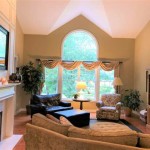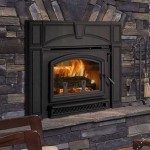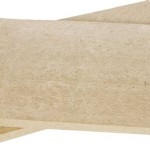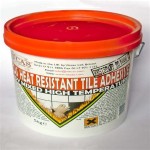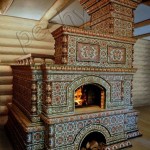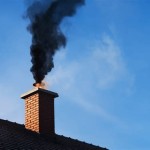Outdoor Fireplace Size: A Comprehensive Guide
Choosing the right size for an outdoor fireplace is crucial for both aesthetic appeal and functional effectiveness. A fireplace that is too small might appear underwhelming and struggle to produce adequate heat, while an oversized one could overwhelm the space and consume excessive fuel. Careful consideration of several factors, including the intended use, the surrounding area, and the available fuel types, is essential for selecting the appropriate dimensions.
The size of an outdoor fireplace is typically determined by its firebox opening, measured in width, height, and depth. The width of the firebox opening significantly impacts the visual presence of the fireplace and the amount of heat it radiates. Larger openings provide a grander view of the flames and distribute heat over a wider area. However, they also require more fuel to maintain a fire.
The height of the firebox opening influences the visual appeal and the draft of the fireplace. A taller opening allows for larger flames and improved airflow, promoting efficient burning. However, excessively tall openings can make the fireplace look disproportionate and potentially lead to smoke escaping into the surrounding area.
The depth of the firebox opening affects the fuel capacity and the heat output of the fireplace. A deeper firebox can accommodate larger logs, allowing for longer burn times and increased heat production. However, a very deep firebox might make it difficult to tend the fire and could result in uneven heat distribution.
Beyond the firebox opening, the overall dimensions of the outdoor fireplace structure also play a significant role. The height of the fireplace structure, from the ground to the top of the chimney, impacts its visual presence and the draw of the chimney. A taller chimney typically creates a stronger draft, improving ventilation and reducing smoke.
The width and depth of the fireplace structure, including any surrounding hearth or mantel, influence its footprint within the outdoor space. Careful consideration of these dimensions is essential to ensure that the fireplace fits comfortably within the designated area without obstructing walkways or other features.
The intended use of the outdoor fireplace is a primary factor in determining the appropriate size. Will it primarily serve as a focal point for gatherings, providing ambiance and warmth, or is it intended for serious cooking? Fireplaces used for cooking often require larger fireboxes and specialized features, such as grills or rotisseries, which influence the overall size.
The size of the surrounding area also plays a crucial role in choosing the right fireplace size. A large patio or backyard can accommodate a larger fireplace, while a smaller space would benefit from a more compact design. The fireplace should be proportionate to the surrounding area to create a balanced and harmonious aesthetic.
The available fuel types also influence the appropriate fireplace size. Wood-burning fireplaces generally require larger fireboxes to accommodate logs, while gas fireplaces can often be smaller due to the controlled nature of the fuel source. The availability and cost of different fuel types should also be considered when determining the size and design of the fireplace.
Local building codes and regulations often dictate specific requirements for outdoor fireplaces, including size restrictions, clearances from combustibles, and chimney height regulations. Consulting with local authorities and obtaining the necessary permits is essential before constructing an outdoor fireplace.
Professional consultation with a landscape architect or fireplace contractor can provide valuable insights and guidance in selecting the appropriate size for an outdoor fireplace. They can assess the specific needs and constraints of the project and recommend a design that meets both aesthetic and functional requirements.
Considering the scale of the surrounding furniture and landscape elements is another important factor. The fireplace should complement the existing features and not appear dwarfed or overwhelming. For instance, a small fireplace situated next to large, oversized furniture will disappear visually. Conversely, a massive fireplace in a small courtyard will dominate the space.
Maintenance considerations should also factor into the size decision. Larger fireplaces will naturally require more cleaning and upkeep. The size and accessibility of the firebox should be considered for ease of cleaning out ashes and debris. Larger chimneys may also require more frequent inspections and cleaning to ensure proper ventilation.
Budget is invariably a determining factor. Larger fireplaces typically require more materials and labor, leading to higher construction costs. Fuel consumption is also directly related to size; larger fireplaces will consume more fuel, contributing to ongoing operational costs. Careful planning and budgeting are essential to ensure the chosen fireplace size aligns with the overall project budget.
Ultimately, selecting the appropriate size for an outdoor fireplace involves a careful balance of aesthetic preferences, functional requirements, and practical considerations. By thoughtfully evaluating these factors, one can create an outdoor space that is both beautiful and enjoyable for years to come.

Outdoor Kitchen Dimensions Google Search

Outdoor Fireplace Installation Concord Ma Stoneworks

Pin Page

Isokern Garden Fireplace 1200 Model From Stovesaver Co

Diy Outdoor Fireplace Kit Fremont Makes Hardscaping And Easy

All Outdoor Fireplaces

Average Fire Pit Dimensions Sizes Landscaping Network

The Elliott

Outdoor Fireplaces And Firepits Faq Mike S Evergreen

Majestic Villawood 36 Traditional Outdoor Wood Burning Fireplace With Us


